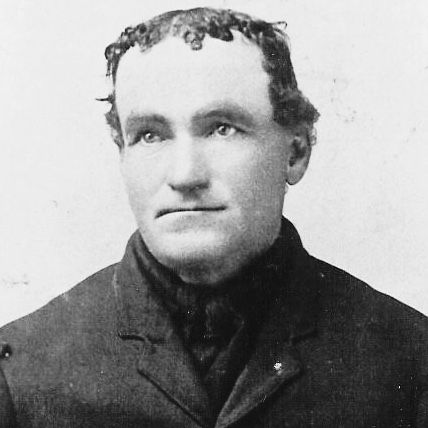Finley Butte is a prominent feature on the north side of Hualapai Valley in the Black Rock Desert. Accessible via a rough, half-hour trip off of Soldier Meadows road, and then a steep hike to the top.

Finley Butte is named for Cheat Finley, who died in a shootout with his neighbor, Jeff Brown in the summer of 1915 in a dispute over a barbed-wire fence.
Cheat Finley was one of nine children born to John and Mary Finley on their farm in Missouri. In 1889, he married Sarah Shackleford and they moved to Modoc County in California, where they began to rise a family. Around 1912 they moved to Nevada to establish a ranch in Hualapai Valley.

On September 9th of the year 1915, Finley arose early, saddled his horse, grabbed his 25-35 Winchester rifle and rode away from his homestead in Hualapai about half past six. He told his wife he was “going to fix the fence.” About the same time, a couple of miles away, Brown finished his morning chores, picked up his 16 gauge shotgun and left home to hunt jackrabbits for use as bait on his trap line. He hadn’t gone more than about three hundred yards when he saw someone coming along the fence line on a horse. As the rider drew nearer, Brown recognized Finley and tensed up remembering a confrontation they had the day before. Finley also recognized Brown and turned his horse and come riding toward Brown. When they were within about 15 to 20 feet of each other they halted their horses and exchanged words. Finley remarked that “my horses are still on the ranch.” To which Brown replied, “Yes, they are still here and no one is bothering them, but I am going in to see Judge Norton and see if there isn’t a law to make you get those horses off of here.” To which Finley allegedly countered. “Listen you degraded son-of-a-bitch, this old rifle is good enough law for me and I am going to kill you or you will me.”
At that point Finley began to raise his rifle. A fraction of a second later two shots, in quick succession, shattered the quiet morning air. Almost in unison with the sound of the second shot Finley and his horse collapsed in a heap. Brown, still holding his smoking gun, dove behind some brush. Almost as quickly as it fell, the horse scrambled to its feet with a serious but not fatal wound in the neck. Finley tried to get up but immediately slumped back to the ground, dead from a gaping hole in his left chest from the savage force of #6 shot at close range. Both shots had come from Browns shotgun.

On September 20, 1915, a Preliminary Hearing was held before Justice of The Peace, Harry Norton, in Gerlach to see if Brown should be bound over on a charge of murder. The State of Nevada was represented by Washoe County District Attorney, L.A. Dunson and Brown represented himself. In addition to the gathering of all the pertinent facts about the shooting, a major focus of the hearing was on whether or not Finley was a quarrelsome man. Several witnesses and neighbors of Finley, all characterized Finley as a quarrelsome man. In the end it was the evidence which showed that Finley had tried to force Brown into a fight on the previous day, which allowed Brown to go free.
The death of Finley left behind a widow with seven children. The shootout created a bitter rift between families and friends in and around Gerlach that lasted for a couple of generations.

Jeff Brown’s own end came at Gerlach in 1945 of “Acute Alcoholism” according to his Death Certificate and his only lasting legacy, aside from being the man who killed Cheat Finley, seems to have been that of being an enigma, even to those who professed to know him.

One Comment
Debra said:
April 30, 2022 at 12:22 PM
This was my great grandfather Fleming, father of Orville and grandfather to Theodore Fredrick Finley………..my father.